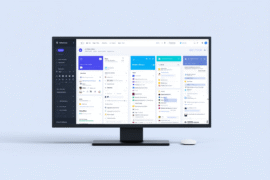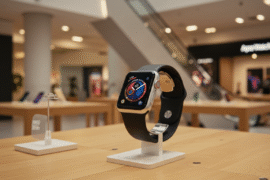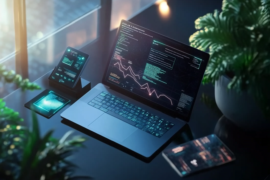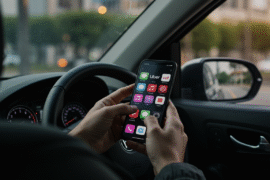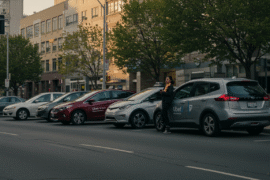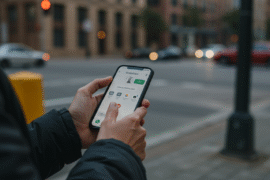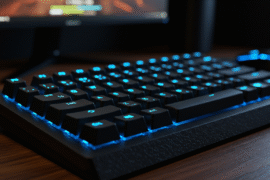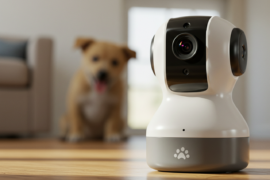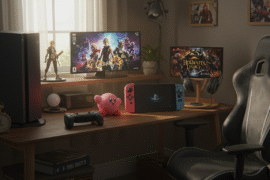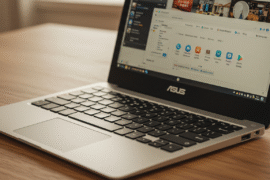This article may contain references to products or services from one or more of our advertisers or partners. We may receive compensation when you click on links to those products or services. Nonetheless, our opinions are our own.
The information presented in this article is accurate to the best of our knowledge at the time of publication. However, information is subject to change, and no guarantees are made about the continued accuracy or completeness of this content after its publication date.
Relevancy has become an ever-growing challenge for brick-and-mortar retailers, especially now, when the online shopping is becoming more and more prevalent. Businesses can benefit from Internet of Things solution company expertise, which, when paired with the rise of interactive technologies, offers physical stores exciting avenues to captivate modern consumers. Gone are the days when retail comprises merely stocking shelves and relying solely on human interaction — today, businesses are forced to innovate relentlessly in order to deliver immersive experiences. This should be done to rival the convenience and personalization of online shopping that has become as attractive as never before.
For these purposes, the majority of all large retail chains and independent boutiques alike are integrating advanced digital signages, IoT beacons, and sensor-enabled devices. They do this to bridge the gap between the physical and digital domains and cater to the users’ needs better. By harnessing these advanced instruments, shops can glean deep insights into customer behavior, provide tailored content on the spot, and maintain a level of flexibility that was once reserved fondly for online platforms. How is it possible? In this article, we will explore the transformation of retail through immersive in-store solutions and illustrate how IoT-based digital displays, data analytics, and strategic system design can keep brick-and-mortar stores not only competitive but also uniquely engaging.
Retail Transformation
In the past, when the ecommerce services emerged, many industry experts speculated that physical stores would fade away because their online rivals gained great popularity. After decades of incorporation of ecommerce stores into our life, the reality has revealed a more nuanced landscape. Regardless of the ability of digital platforms to reshape shopping habits, people still value tangible, in-person experiences. This underscores a vital need for retail sellers to adjust their old ways to the new reality. In order to stay relevant, shops should undergo a technological metamorphosis that can fuse the best of both online and offline worlds.
As you may have noticed, much of this transformation stems from the fact that contemporary consumers are more informed and well-connected than ever before in the past. Given this, they expect instant access to product details, interactive content, and customized recommendations. All these features they already can easily access online and enjoy without any restrictions. On the contrary, traditional static posters and standard store layouts struggle to keep pace with these rising expectations. To solve this issue, modern businesses can offer immersive experiences that utilize interactive displays. These displays can respond to customer preferences, offer real-time promotions that can change based on foot traffic, and also provide special customized environment-aware beacons that collect behavioral data. All these groundbreaking innovations can help store managers better understand customer flows. Besides, it can equip brand marketers with the intelligence needed to design more compelling campaigns that will increase ROI.
It goes without saying that immersive retail isn’t just merely about flashy visuals — it’s about crafting a personal narrative for each customer that would align with the store’s branding and identity. When retailers are bold enough to try these cutting-edge technologies, they would boost their profits in the long run. This can be achieved with these actions: integrating content-driven displays, mobile connectivity, and sensor-fed analytics. Thanks to using such an approach, retailers can stand out in a fiercely competitive sector. It will let physical stores retain the emotional draw of a real-world environment while still benefiting from the data-driven strategies that are inherently typical of ecommerce.
Voted "Best Overall Budgeting App" by Forbes and WSJ
Monarch Money helps you budget, track spending, set goals, and plan your financial future—all in one app.
Get 50% OFF your first year with code MONARCHVIP
In-Store Embedded Devices
In an immersive retail environment, there is a cornerstone — a well-orchestrated network of embedded devices that seamlessly blend into daily operations. Digital signages act as a dynamic canvas that can successfully convey product information, promotions, and interactive marketing campaigns. All these displays even are able to detect environmental cues: store temperature, time of day, or special holiday events. The displays can also automatically adapt their content to better serve the intended purposes. A fashion boutique, for instance, might be able to switch from highlighting lightweight attire in the morning to featuring evening gowns as the nighttime approaches.
Regardless of a store size — be is large or small, many rely on customized embedded development services. They are able to integrate sensor-fused hardware, optimize firmware for low-energy usage, and ensure that each one of the devices is connected and can operate in sync with others at peak efficiency. When organizations decide to tailor embedded solutions to the retailer’s specific needs rather than just rely solely on generic off-the-shelf systems, businesses can unlock the unleashed potential of their immersive experiences.
So-called smart shelves bring an added layer of sophistication. Equipped with weight sensors and RFID tags, these shelves can monitor inventory levels in real time and even trigger automatic reorders or send low-stock alerts to store staff. These innovative tools can also deliver interactive product suggestions and bundle items that complement each other. Just imagine a customer who picks up a certain brand of cereal, and then witnesses a nearby display that automatically suggests the perfect milk or yogurt pairing. This is the high level of targeted cross-selling that is guided by live store data, which makes shopping more engaging and convenient for potential buyers, even for those who are primarily interested in window-shopping.
With specialized interactive kiosks and touchscreen panels, you can round out the experience and offer customers the chance to view extended product catalogs or read expert reviews right away on the spot. This self-service element mirrors what shoppers typically do online, specifically, their research of the products before checking out. The major advantage here lies in the immediate physical access to merchandise. Buyers can easily read the digital reviews, subsequently quickly examine and try out the actual product. These rich opportunities help reduce the level of uncertainty and boost the likelihood of a purchase in the end.
When retailers decide to embed sensors and microcontrollers into these devices, they are free to gather granular data about product interactions. For example, they can identify how often does a customer lift a particular item from the shelf, or reveal if time-limited promotions yield extra visits to a specific section of the store. Such powerful metrics grant managers the possibility to optimize product placement, tweak promotions, and even refine store layouts.

Reviewed and edited by Albert Fang.
See a typo or want to suggest an edit/revision to the content? Use the contact us form to provide feedback.
At FangWallet, we value editorial integrity and open collaboration in curating quality content for readers to enjoy. Much appreciated for the assist.
Did you like our article and find it insightful? We encourage sharing the article link with family and friends to benefit as well - better yet, sharing on social media. Thank you for the support! 🍉
Article Title: Retail Experiences with Personalized IoT Displays
https://fangwallet.com/2025/03/20/retail-experiences-with-personalized-iot-displays/The FangWallet Promise
FangWallet is an editorially independent resource - founded on breaking down challenging financial concepts for anyone to understand since 2014. While we adhere to editorial integrity, note that this post may contain references to products from our partners.
The FangWallet promise is always to have your best interest in mind and be transparent and honest about the financial picture.
Become an Insider

Subscribe to get a free daily budget planner printable to help get your money on track!
Make passive money the right way. No spam.
Editorial Disclaimer: The editorial content on this page is not provided by any of the companies mentioned. The opinions expressed here are the author's alone.
The content of this website is for informational purposes only and does not represent investment advice, or an offer or solicitation to buy or sell any security, investment, or product. Investors are encouraged to do their own due diligence, and, if necessary, consult professional advising before making any investment decisions. Investing involves a high degree of risk, and financial losses may occur including the potential loss of principal.
Source Citation References:
+ Inspo
There are no additional citations or references to note for this article at this time.





